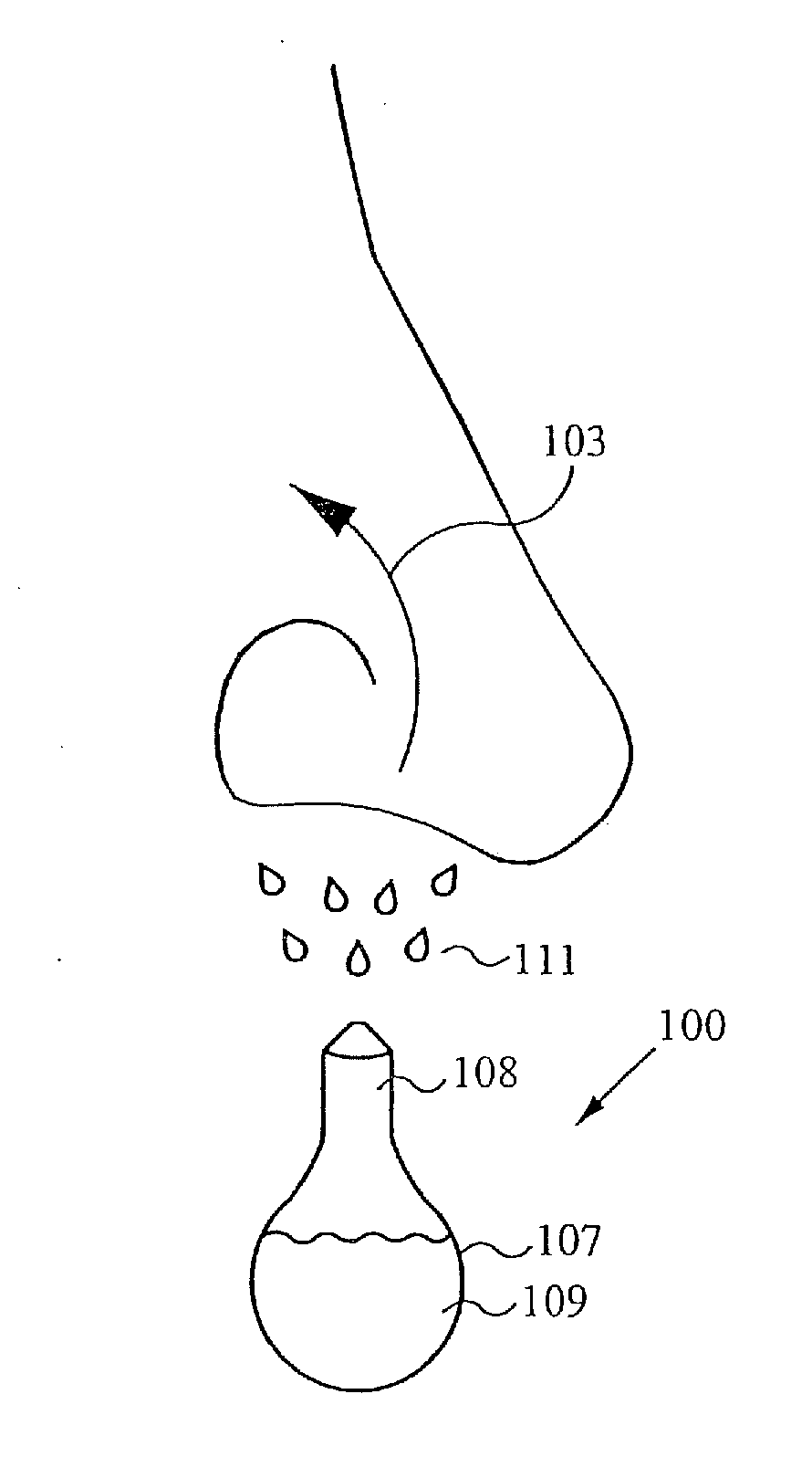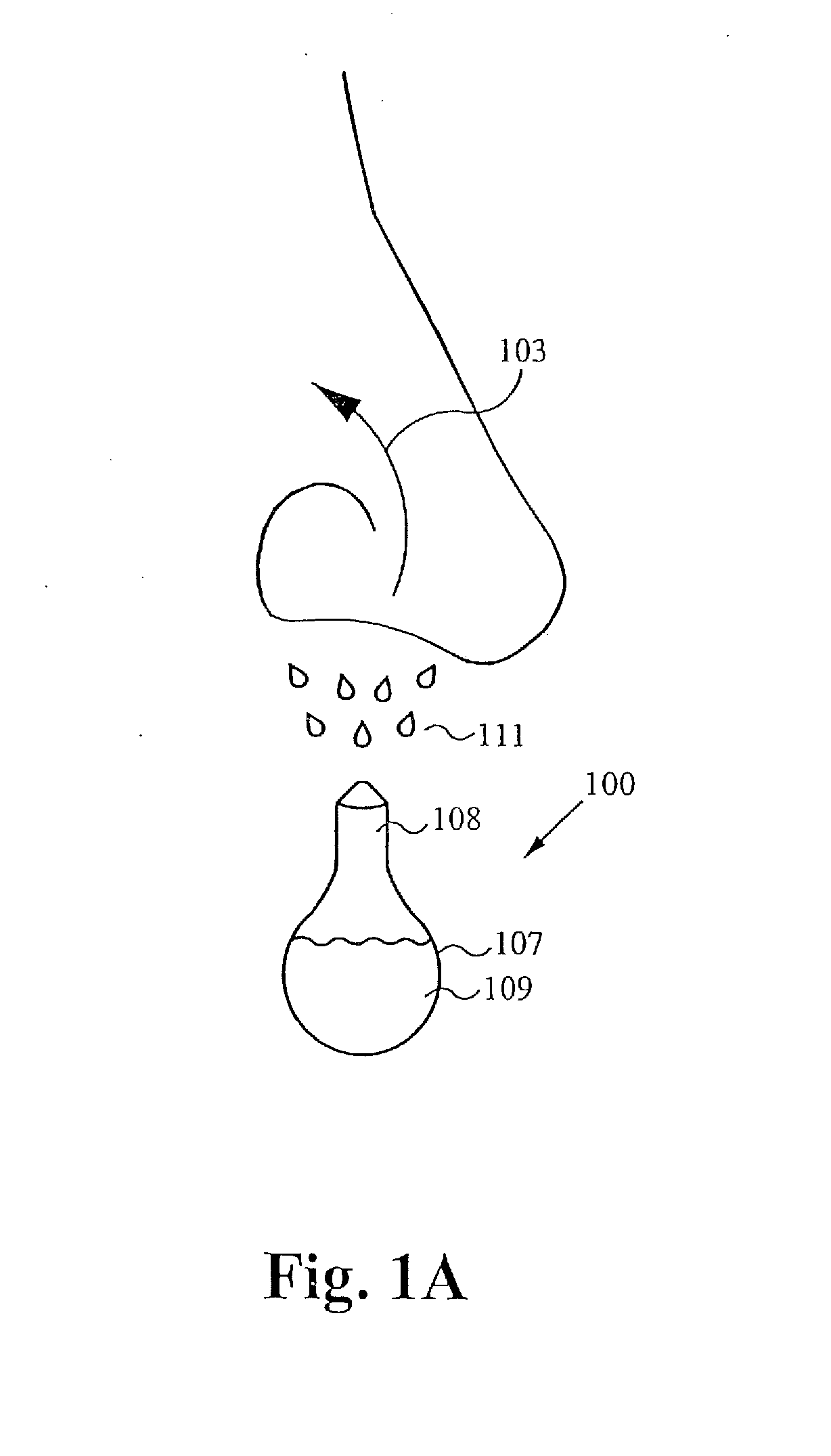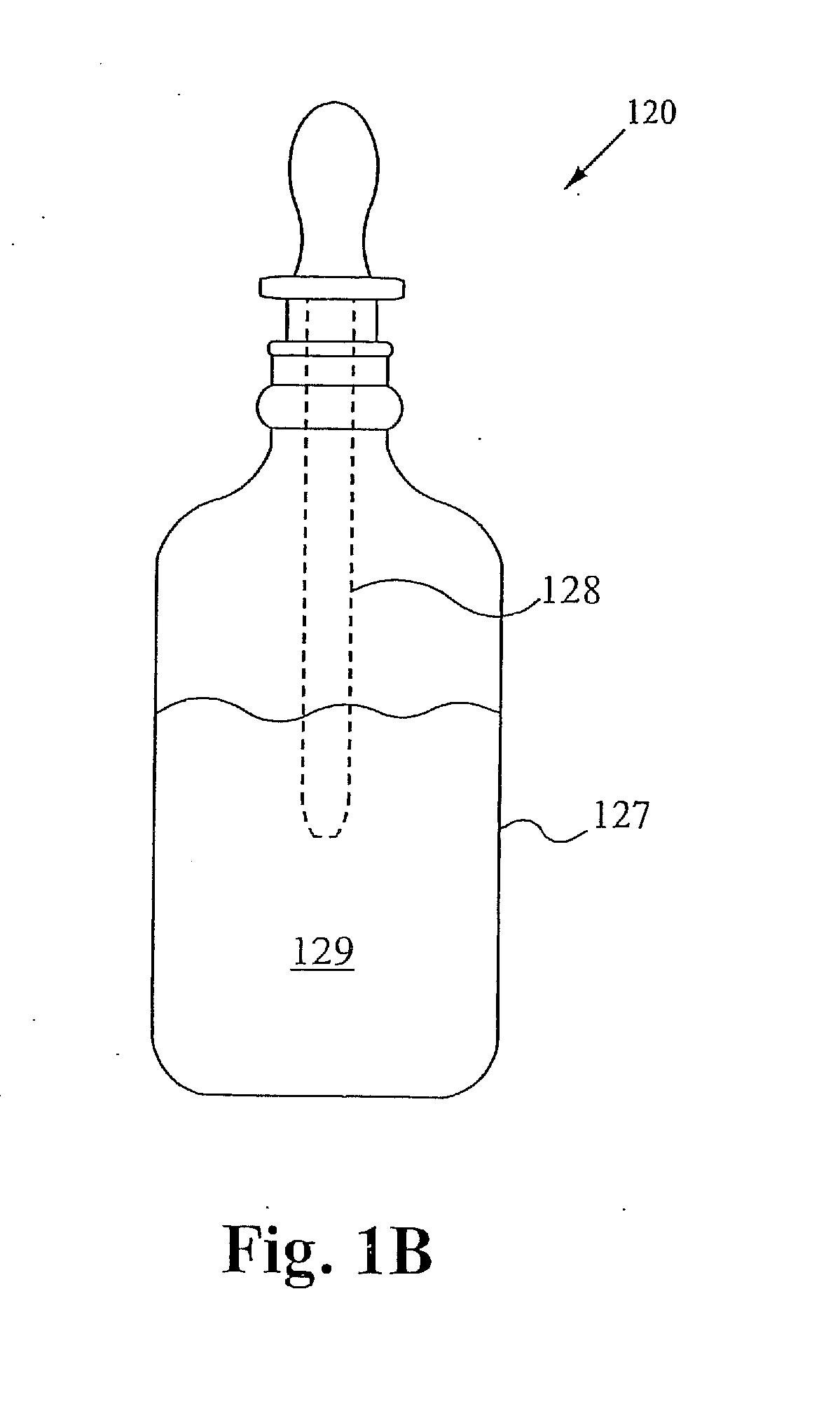Compositions for and methods of contrlling olfactory responses to odorants
a technology of olfactory response and composition, applied in the direction of drug composition, peptide/protein ingredient, biocide, etc., can solve the problems of serious health risks, damage to the olfactory system, anosmia, etc., to enhance the peoples sensitivity to flower odorant or odorant, and enhance the olfactory sense sensitivity
- Summary
- Abstract
- Description
- Claims
- Application Information
AI Technical Summary
Benefits of technology
Problems solved by technology
Method used
Image
Examples
Embodiment Construction
[0034]The process of how the binding of the ligand (odor molecule or odorant) to the receptor leads to an action potential in the receptor neuron is via a second messenger pathway depending on the organism. In mammals the odorants stimulate adenylate cyclase to synthesize cAMP via a G protein referred to as Golf. cAMP, which is the second messenger here, opens a cyclic nucleotide-gated ion channel (CNG) producing an influx of cations (largely Ca+2 with some Na+) into the cell, slightly depolarising it. The C+2 in turn opens a C+2 activated chloride channel leading to efflux of Cl−, further depolarising the cell and triggering an action potential. C+2 is then extruded through a sodium-calcium exchanger. A calcium-calmodulin complex also acts to inhibit the binding of cAMP to the cAMP dependent channel, thus contributing to olfactory adaptation. In this mechanism the cAMP works by directly binding to the ion channel rather than through activation of protein kinase A. It is similar to ...
PUM
 Login to View More
Login to View More Abstract
Description
Claims
Application Information
 Login to View More
Login to View More - R&D
- Intellectual Property
- Life Sciences
- Materials
- Tech Scout
- Unparalleled Data Quality
- Higher Quality Content
- 60% Fewer Hallucinations
Browse by: Latest US Patents, China's latest patents, Technical Efficacy Thesaurus, Application Domain, Technology Topic, Popular Technical Reports.
© 2025 PatSnap. All rights reserved.Legal|Privacy policy|Modern Slavery Act Transparency Statement|Sitemap|About US| Contact US: help@patsnap.com



